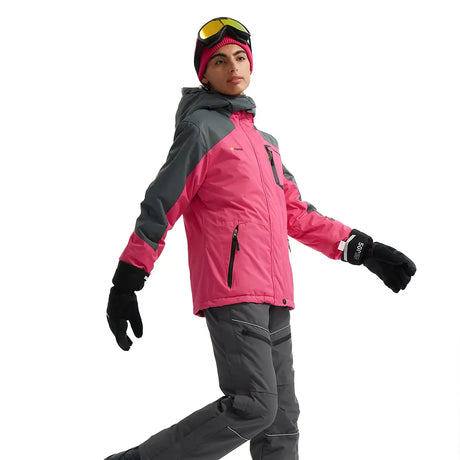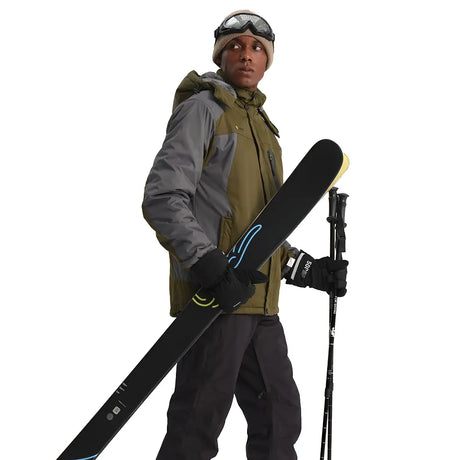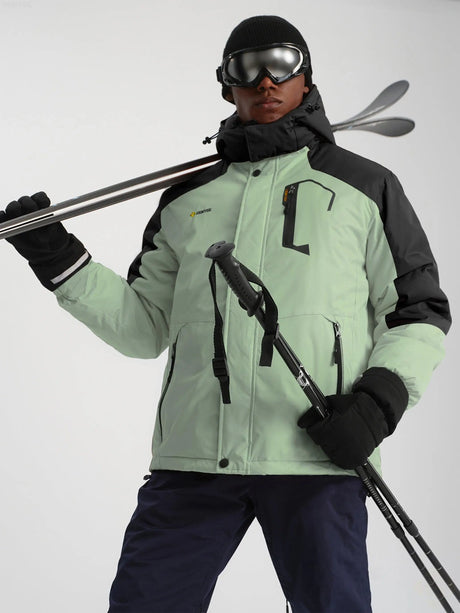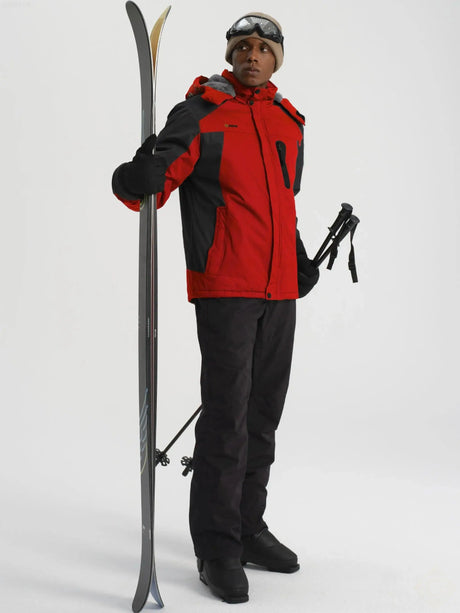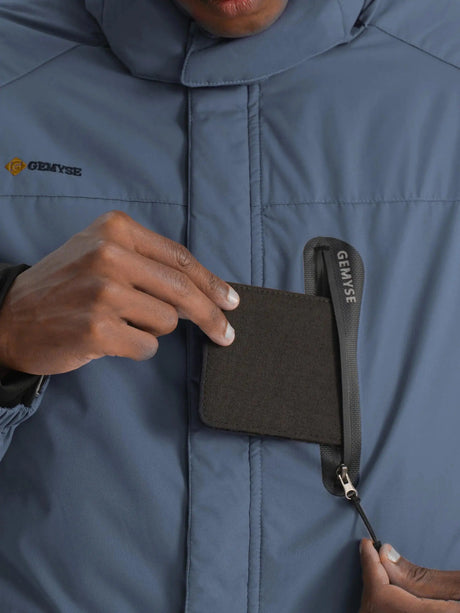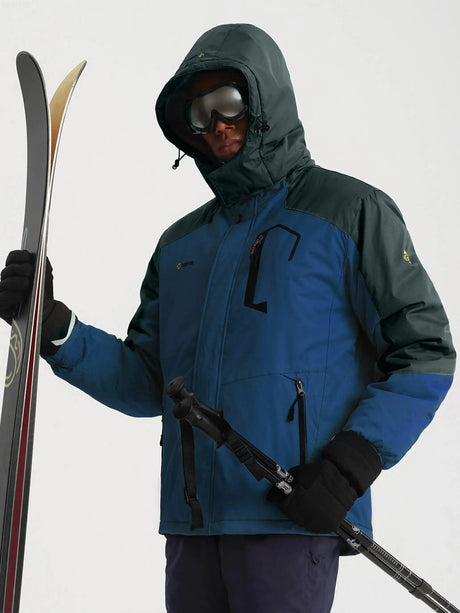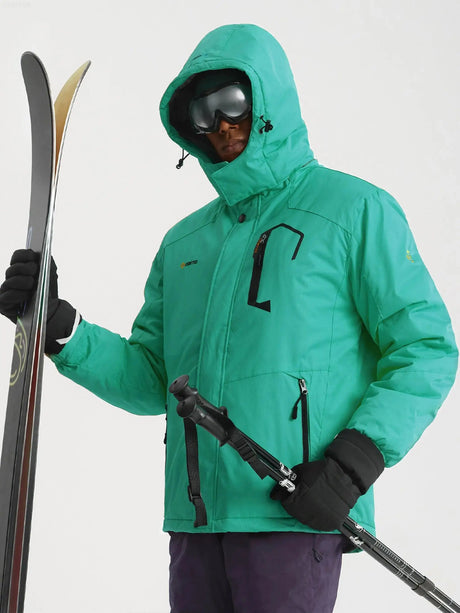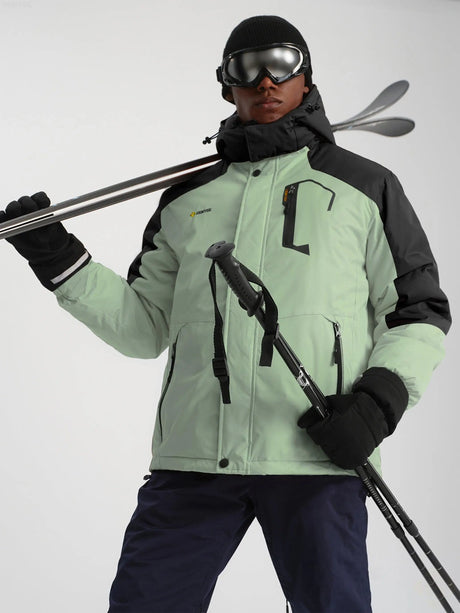
Top Mid Layers for Skiing Adventures
Top Mid Layers for Skiing Adventures Mid layers are worn between your base layer and outer shell to provide insulation and retain body heat. They are designed to trap warmth while allowing moisture to escape, keeping you dry and comfortable. This is crucial for skiing, where temperature regulation is vital to avoid overheating or freezing. The Function of Mid Layers Mid layers primarily serve to insulate your body by trapping warm air close to your skin. This trapped air acts as a buffer against the cold, helping maintain your core temperature. In addition to insulation, mid layers play a crucial role in moisture management, allowing sweat to evaporate without soaking your outer layers. This prevents the dreaded chill that can occur when damp clothing cools down, a common problem in cold environments. By facilitating moisture transfer, mid layers ensure that you remain dry and comfortable throughout your skiing adventure. How Mid Layers Fit into the Layering System The layering system is a tried and true method for outdoor activities, particularly skiing, where conditions can vary dramatically. A base layer is designed to wick moisture away from the skin, while the outer shell offers protection against wind and precipitation. The mid layer sits between these two, providing the necessary insulation to keep you warm. Understanding this synergy is key to selecting the right mid layer, as it must work harmoniously with the other layers to optimize performance. A well-chosen mid layer complements the entire system, enhancing comfort and efficiency on the slopes. Choosing the Right Mid Layer for Your Needs Selecting the best mid layer depends on various factors such as temperature, activity level, and personal preference. Different materials and designs offer varying levels of warmth and breathability. For instance, high-intensity activities may require a mid layer with excellent breathability to manage sweat and heat. Conversely, for those skiing in extremely cold conditions, a mid layer with superior insulation properties is essential. Additionally, personal preferences regarding fit, style, and fabric texture can influence your choice. Let's dive into some of the best mid layer options for skiing. Fleece Mid Layers: A Popular Choice Fleece mid layers are a favorite among skiers for their warmth, comfort, and versatility. Made from synthetic fibers, fleece is lightweight yet provides excellent insulation. Here are some top fleece mid layer options: Best Fleece Mid Layers for Skiing Patagonia R1 Fleece PulloverLightweight and breathable, the Patagonia R1 offers exceptional warmth without bulk. Its grid-patterned interior enhances moisture-wicking, making it ideal for high-intensity skiing. The design allows for unrestricted movement, which is crucial when navigating challenging terrains. This pullover is also known for its durability, maintaining its insulating properties even after multiple washes. The North Face TKA 100 Glacier 1/4 ZipThis mid layer is known for its soft, plush feel and efficient insulation. It's perfect for layering under a ski jacket without adding extra weight, offering a cozy fit that does not compromise on flexibility. The TKA 100 Glacier is designed with a focus on comfort, making it suitable for long days on the slopes. Its simple yet effective design appeals to skiers of all skill levels. Arc'teryx Delta LT JacketThe Arc'teryx Delta LT is a versatile mid layer that provides warmth and comfort. Its trim fit makes it easy to layer, and its breathable fabric ensures you stay dry throughout the day. This jacket's lightweight nature makes it a practical choice for those who value efficiency in their gear. Furthermore, the Delta LT's minimalistic design pairs well with various outerwear, making it a staple in any skier's wardrobe. Why Choose Fleece Mid Layers? Fleece mid layers are popular for their ability to provide warmth without restricting movement. The flexibility of fleece fabric allows skiers to perform at their best without feeling hindered by their clothing. They are also highly breathable, making them suitable for varying weather conditions, from chilly mornings to sunnier afternoons. Additionally, fleece is quick-drying, which is a significant advantage when dealing with snow and moisture. This property ensures that if the fleece gets wet, it won't stay damp for long, reducing the risk of hypothermia. The Environmental Impact of Fleece While fleece offers numerous benefits, it’s important to consider its environmental impact. Traditionally made from petroleum-based fibers, fleece can contribute to microplastic pollution when washed. However, many brands now offer fleece made from recycled materials, reducing its ecological footprint. Choosing recycled fleece options not only supports environmental sustainability but also promotes a circular economy. As consumers become more eco-conscious, the demand for sustainable fleece options continues to rise, encouraging more brands to innovate in this area. Caring for Your Fleece Mid Layers Proper care extends the lifespan of your fleece mid layers, ensuring they remain effective over time. Washing fleece in cold water with a gentle detergent prevents damage to the fibers and maintains its insulating properties. Avoid using fabric softeners, as they can coat the fibers and hinder moisture-wicking capabilities. Air drying is preferred over using a dryer, which can cause pilling. By following these care instructions, you can keep your fleece mid layers in top condition, ready for many skiing adventures to come. Insulated Mid Layers: Maximum Warmth For those skiing in extremely cold conditions, insulated mid layers offer the highest level of warmth. These layers often incorporate synthetic or down insulation to trap heat effectively. Let's explore some of the best-insulated mid layer options: Top Insulated Mid Layers for Skiing Rab Xenon Insulated JacketThe Rab Xenon Jacket is lightweight and packable, featuring synthetic insulation that retains warmth even when wet. It's an excellent choice for harsh weather conditions, providing reliable protection against biting winds and freezing temperatures. The jacket's compact design allows it to fit easily into a backpack, making it convenient for on-the-go skiers. Its durability ensures it withstands the rigors of frequent use, maintaining performance over time. Columbia Powder Lite Hooded JacketThis jacket combines synthetic insulation with a thermal-reflective lining for added warmth. Its water-resistant shell makes it suitable for snowy adventures, offering protection from both moisture and cold. The hood provides additional coverage, shielding the face and neck from wind and snow. Columbia's attention to detail in design ensures that this jacket not only performs well but also offers comfort and style on the slopes. Mountain Hardwear Ghost Whisperer/2 JacketKnown for its impressive warmth-to-weight ratio, the Ghost Whisperer/2 utilizes down insulation to provide exceptional heat retention without added bulk. This jacket is a favorite among skiers who prioritize weight savings without sacrificing warmth. Its minimalist design is both functional and stylish, appealing to those who appreciate sleek, modern aesthetics. The Ghost Whisperer/2's high-quality materials ensure longevity, making it a valuable investment for any skier. Why Choose Insulated Mid Layers? Insulated mid layers are perfect for those who require extra warmth during skiing adventures. They are highly effective at retaining heat, providing a cozy barrier against extreme cold. These layers are often designed to be water-resistant, offering protection against snow and light rain. This feature is crucial for maintaining warmth, as wet clothing can rapidly lead to hypothermia. Insulated mid layers are especially beneficial for skiers planning to tackle high-altitude slopes or those skiing in unpredictable weather conditions. Synthetic vs. Down Insulation Choosing between synthetic and down insulation depends on specific needs and preferences. Synthetic insulation retains warmth even when wet, making it ideal for damp conditions. It is also hypoallergenic and typically less expensive than down. Down insulation, on the other hand, offers superior warmth-to-weight ratios, making it the go-to choice for dry, cold environments. However, it loses insulating properties when wet unless treated with a water-repellent coating. Understanding these differences helps in selecting the most suitable insulated mid layer for your skiing adventures....


